Having a planted aquarium can be a beautiful and rewarding addition to any space. Not only do aquatic plants provide a visual appeal, but they also contribute to the overall health and balance of the aquarium ecosystem.
If you’re new to the world of planted aquariums, don’t worry – this guide will walk you through the process of setting up your very own green oasis.
Understanding the Basics of a Planted Aquarium
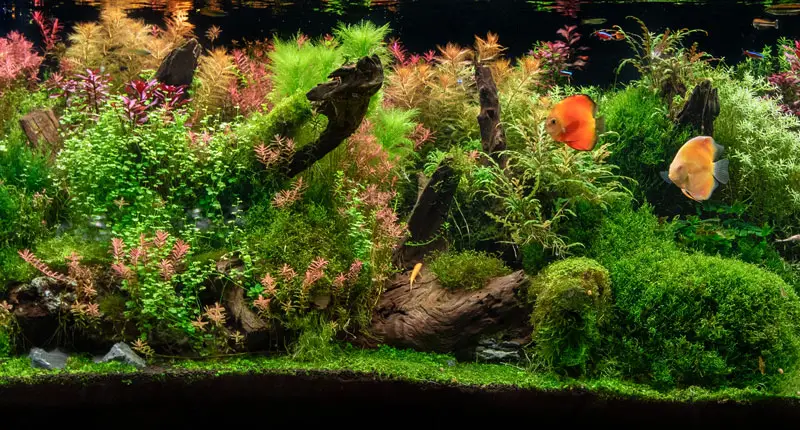
Before diving into the specifics, it’s important to understand the importance of a planted aquarium and the different types available. A planted aquarium mimics a natural underwater environment, providing a habitat for both fish and plants to thrive.
The plants in the aquarium serve several purposes, such as oxygenating the water, absorbing excess nutrients, and providing shelter for fish and fry.
Creating a planted aquarium is not just about adding some greenery to your fish tank. It is a carefully planned and executed process that requires knowledge and expertise.
The balance between fish, plants, and water quality is crucial for the success of a planted aquarium. By understanding the basics, you can create a beautiful and thriving underwater ecosystem.
Importance of a Planted Aquarium
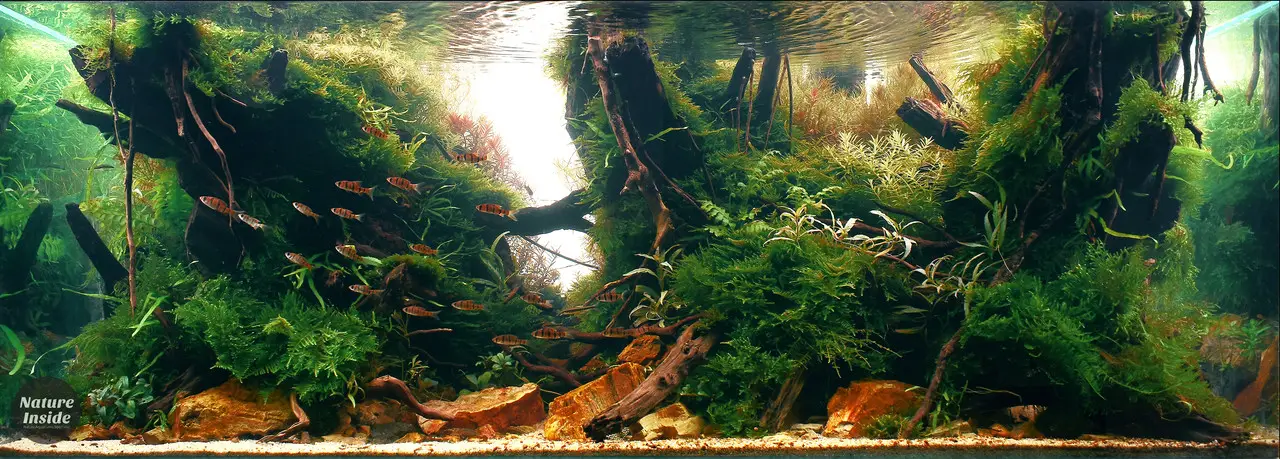
A planted aquarium offers numerous benefits. Firstly, the plants act as natural water purifiers by removing harmful substances, such as ammonia and nitrates, produced by fish waste.
This helps maintain a healthy and stable water quality, reducing the risk of fish diseases. Additionally, plants release oxygen into the water during photosynthesis, ensuring a well-oxygenated environment for fish.
Moreover, a planted aquarium adds aesthetic value to your home or office space. The lush greenery and vibrant colors of the plants create a visually appealing and calming atmosphere. It can be a great conversation starter and a source of relaxation and stress relief.
Furthermore, a planted aquarium provides a natural habitat for fish and other aquatic creatures. The plants offer hiding spots and shelter, reducing stress for the fish and providing a sense of security. This is especially important for breeding fish, as the plants provide a safe place for them to lay their eggs and protect their fry.
Different Types of Planted Aquariums
Planted aquariums come in various styles, each with its own unique characteristics and requirements. Some popular types include the Dutch aquarium, Nature aquarium, and Biotope aquarium. Dutch aquariums focus on creating lush and vibrant underwater gardens, with a variety of plant species meticulously arranged to create a visually striking display.
Nature aquariums, on the other hand, strive to recreate the natural beauty of landscapes, such as forests, mountains, or meadows. They often incorporate driftwood, rocks, and other natural elements to create a more realistic and harmonious environment. The plants are arranged in a way that mimics the natural growth patterns found in nature.
Biotope aquariums aim to replicate specific habitats found in nature, such as a South American river or an Asian rainforest. These aquariums are designed to closely resemble the natural conditions of the chosen habitat, including the water parameters, plant species, and fish species.
They provide a unique opportunity to observe and appreciate the diversity of aquatic life in different parts of the world.
Regardless of the type of planted aquarium you choose, it’s important to research and understand the specific requirements of the plants and fish you intend to keep.
Factors such as lighting, substrate, fertilization, and water parameters play a crucial role in the success of a planted aquarium. With proper care and maintenance, you can create a captivating and thriving underwater world.
Necessary Equipment for a Planted Aquarium
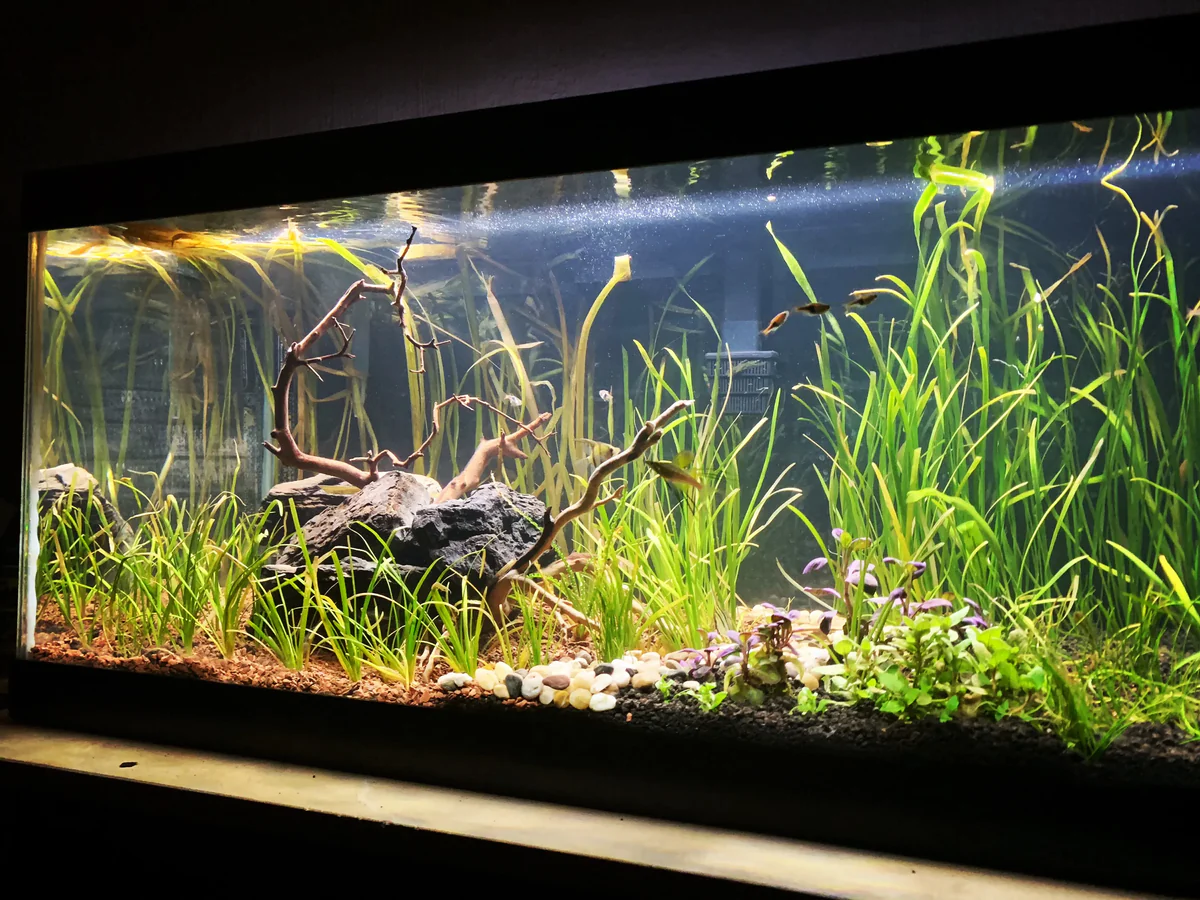
Now that you have a basic understanding of planted aquariums, let’s take a look at the essential equipment you’ll need to set up your own green paradise.
Creating a vibrant and thriving planted aquarium requires careful consideration of various factors, including the size and shape of the tank, the lighting requirements of the plants, and the filtration system to maintain water clarity and quality.
Choosing the Right Aquarium Tank
When selecting an aquarium tank, consider the size and space you have available. A larger tank generally provides better stability and more room for plants and fish. It’s also important to choose a tank made of high-quality glass or acrylic to ensure durability. Keep in mind that the shape of the tank can also impact the layout and overall aesthetic of your planted aquarium.
Imagine a spacious tank filled with lush green plants, creating a mesmerizing underwater landscape. The size and shape of the tank will determine the number and variety of plants you can include. A larger tank allows for more creativity in designing your aquascape, with the ability to create different levels and focal points.
Selecting the Proper Lighting
Lighting is crucial for the growth and health of aquarium plants. Most aquatic plants require moderate to high levels of light for photosynthesis. LED lights are a popular choice due to their energy efficiency and adjustable settings.
When calculating the amount of light needed for your tank, consider the size and depth of the aquarium, as well as the light requirements of the specific plant species you plan to include.
Imagine the gentle glow of LED lights illuminating your planted aquarium, mimicking the natural sunlight that plants need to thrive. The right lighting not only promotes plant growth but also enhances the visual appeal of your tank.
It brings out the vibrant colors of the plants and creates a captivating ambiance in your living space.
Importance of Filtration Systems
In the realm of aquarium enthusiasts, the significance of efficient filtration systems transcends mere water clarity; it is a linchpin for maintaining a thriving aquatic ecosystem.
-
Mitigating Algae Blooms with Efficient Filtration: One of the primary challenges in maintaining a healthy aquarium is the persistent threat of algae blooms. Adequate filtration systems play a pivotal role in controlling the excess nutrients that fuel these outbreaks.
This is particularly crucial in planted tanks, where the delicate balance between plant growth and potential algae overgrowth requires a precise filtration approach.
-
Balancing Plant and Fish Species Harmony: Achieving a harmonious environment for both plant species and fish species necessitates meticulous filtration. The symbiotic relationship between aquarium plants and tropical fish relies on a stable ecosystem.
An efficient filtration system ensures the removal of waste, providing a conducive environment where fish provide carbon dioxide essential for plant growth.
-
Optimizing Water Chemistry for Healthy Plant Growth: The success of a planted aquarium hinges on maintaining optimal water chemistry. Filtration systems aid in managing parameters like carbon dioxide levels and nutrient concentrations.
This is particularly critical for healthy plant growth. The removal of impurities and the regulation of tank water conditions contribute to the thriving life within the aquarium.
-
Preventing Algae Growth with Proper Filtration Techniques: Algae growth is a perpetual concern for aquarium enthusiasts. Effective filtration systems act as a frontline defense by efficiently removing debris and deterring the accumulation of nutrients that spur algae growth.
For planted aquariums, this is indispensable, as it ensures that the aesthetic appeal of live plants isn’t compromised.
-
Sustaining a Beautiful Planted Tank Ecosystem: The ultimate goal of a planted tank is to create a visually stunning and thriving ecosystem. Here, filtration systems go beyond maintaining water clarity; they actively contribute to the overall health of the aquarium.
The careful selection of hardy plants, such as stem plants and tall plants, is complemented by filtration systems that prevent issues like algae infestation, resulting in a beautiful planted tank.
The importance of filtration systems in the context of a planted aquarium setup cannot be overstated. These systems are the unsung heroes that ensure the delicate balance between plant and fish life is preserved.
By addressing challenges like algae blooms, fostering a symbiotic relationship between plants and fish, optimizing water chemistry, preventing algae growth, and sustaining the overall beauty of the planted tank, filtration systems stand as the cornerstone of a successful and vibrant aquatic habitat.
Preparing Your Aquarium for Planting

With the necessary equipment in hand, it’s time to prepare your aquarium for planting. This process involves cleaning the tank, setting up the substrate, and installing the equipment.
Creating a healthy and thriving environment for your aquatic plants is essential for their growth and overall well-being.
Cleaning the Aquarium
Start by thoroughly cleaning the aquarium and removing any dirt or residue. A clean tank provides a fresh start for your plants and prevents any potential contaminants from affecting their health.
Rinse the tank with clean water and avoid using any soap or detergents, as they can be harmful to aquatic life. Take your time to ensure every corner of the tank is free from debris.
Additionally, it’s a good idea to use a sponge or algae scraper to remove any algae buildup on the glass. Algae can compete with your plants for nutrients and light, so keeping it under control is crucial. Regular maintenance and cleaning will help maintain a clear and visually appealing aquarium.
Setting Up the Substrate
The substrate is the material that forms the floor of your planted aquarium. It not only provides anchorage for plant roots but also serves as a source of nutrients. There are various types of substrates available, such as gravel, sand, and specialized plant substrates.
Choose a substrate that suits the specific requirements of your chosen plants and consider adding a layer of fertilizer underneath for optimal growth.
When setting up the substrate, it’s important to create different levels or slopes to add depth and visual interest to your aquarium. This will also allow for better water circulation and nutrient distribution throughout the tank. Take your time to arrange the substrate in a way that complements the overall aesthetic you want to achieve.
Before adding the substrate, you may also consider adding a layer of aquarium soil or clay-based substrate. These materials can provide additional nutrients for your plants and promote healthy root development. Research the specific needs of your plants to determine if this step is necessary.
Installing the Equipment
Now it’s time to set up the equipment, including the lighting system, filtration system, and heater if necessary. Proper installation of these components is crucial for maintaining a stable and conducive environment for your plants.
Start by carefully reading and following the manufacturer’s instructions for each piece of equipment. This will ensure that you set them up correctly and avoid any potential damage. Consider the specific needs of your plants when choosing the lighting system. Some plants require higher light intensity, while others thrive in lower light conditions.
Position the lighting system in a way that provides even lighting throughout the aquarium. This will help prevent any areas from being shaded and promote uniform growth among your plants. Additionally, make sure the equipment is easily accessible for maintenance purposes, such as changing bulbs or cleaning filters.
If you have a filtration system, ensure that it is properly installed and functioning. A good filtration system helps maintain water quality by removing debris and waste, which can be detrimental to your plants’ health. Regular maintenance of the filtration system is essential to keep it running efficiently.
Lastly, if your aquarium requires a heater, carefully install it according to the manufacturer’s instructions. Maintaining a consistent water temperature is crucial for the well-being of your plants and aquatic life. Monitor the temperature regularly to ensure it remains within the optimal range for your plants.
By following these steps and taking the time to properly prepare your aquarium for planting, you are setting the stage for a beautiful and thriving underwater garden.
Remember to research the specific needs of your chosen plants and provide them with the care and attention they require. With patience and dedication, you will be rewarded with a stunning aquatic display.
Choosing the Right Plants for Your Aquarium
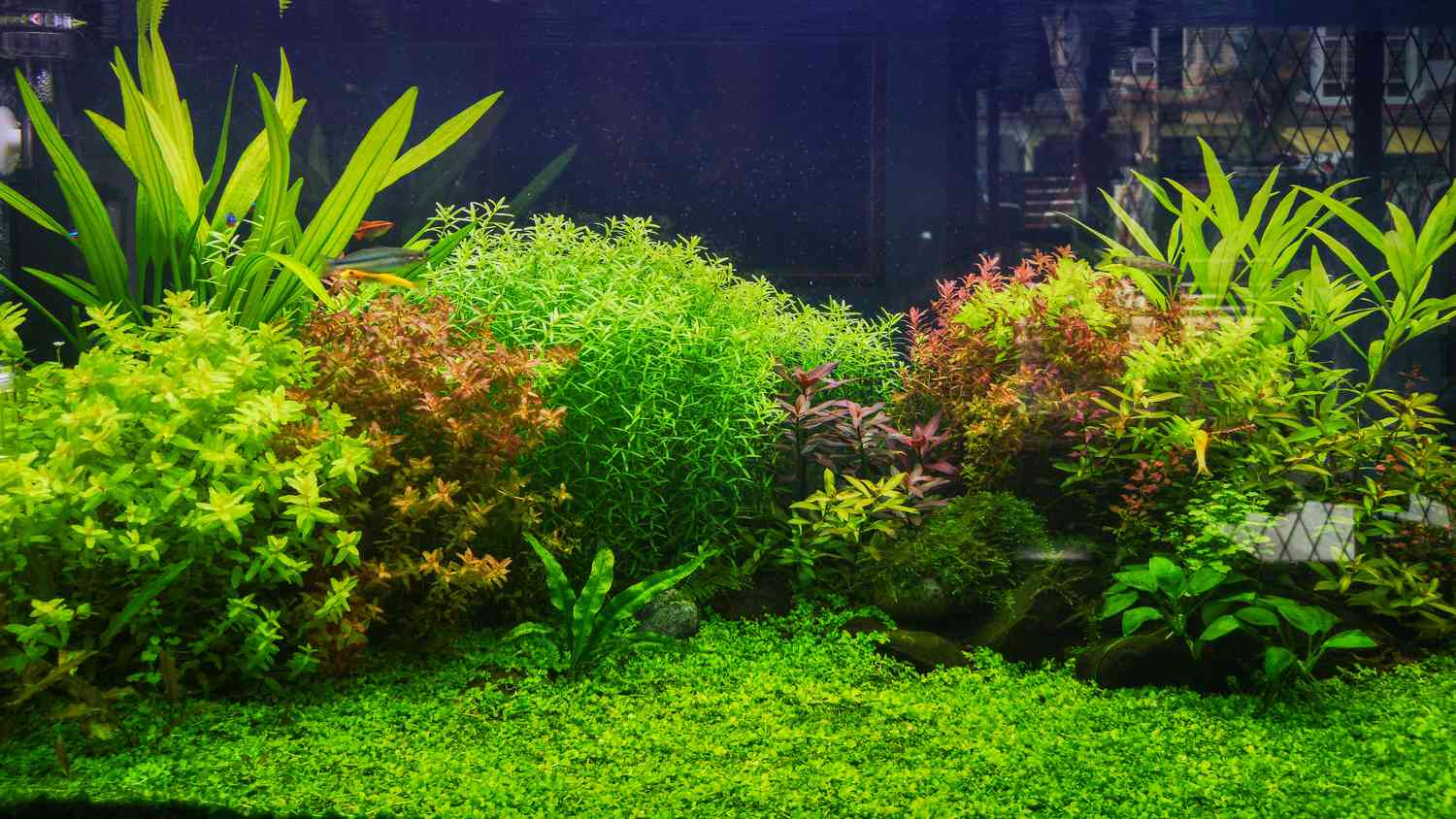
One of the most exciting steps in setting up a planted aquarium is selecting the plants that will create a lush and vibrant underwater landscape. Consider the following factors when choosing your aquarium plants.
Factors to Consider When Choosing Aquarium Plants
Factors such as water temperature, lighting requirements, and growth rate are important to consider when selecting plants for your aquarium. Certain plants thrive in warmer water, while others prefer cooler temperatures. Additionally, some plants require high-intensity lighting, while others can thrive in more moderate conditions.
Popular Aquarium Plants and Their Requirements
Popular aquarium plants include Java Fern, Anubias, Cryptocoryne, and Amazon Sword. These plants are relatively hardy and can adapt to a wide range of water conditions. They are ideal for beginners and provide a beautiful backdrop in any planted aquarium.
Research the specific requirements of your chosen plants and ensure they are compatible with each other and your aquarium setup.
Planting Process in the Aquarium
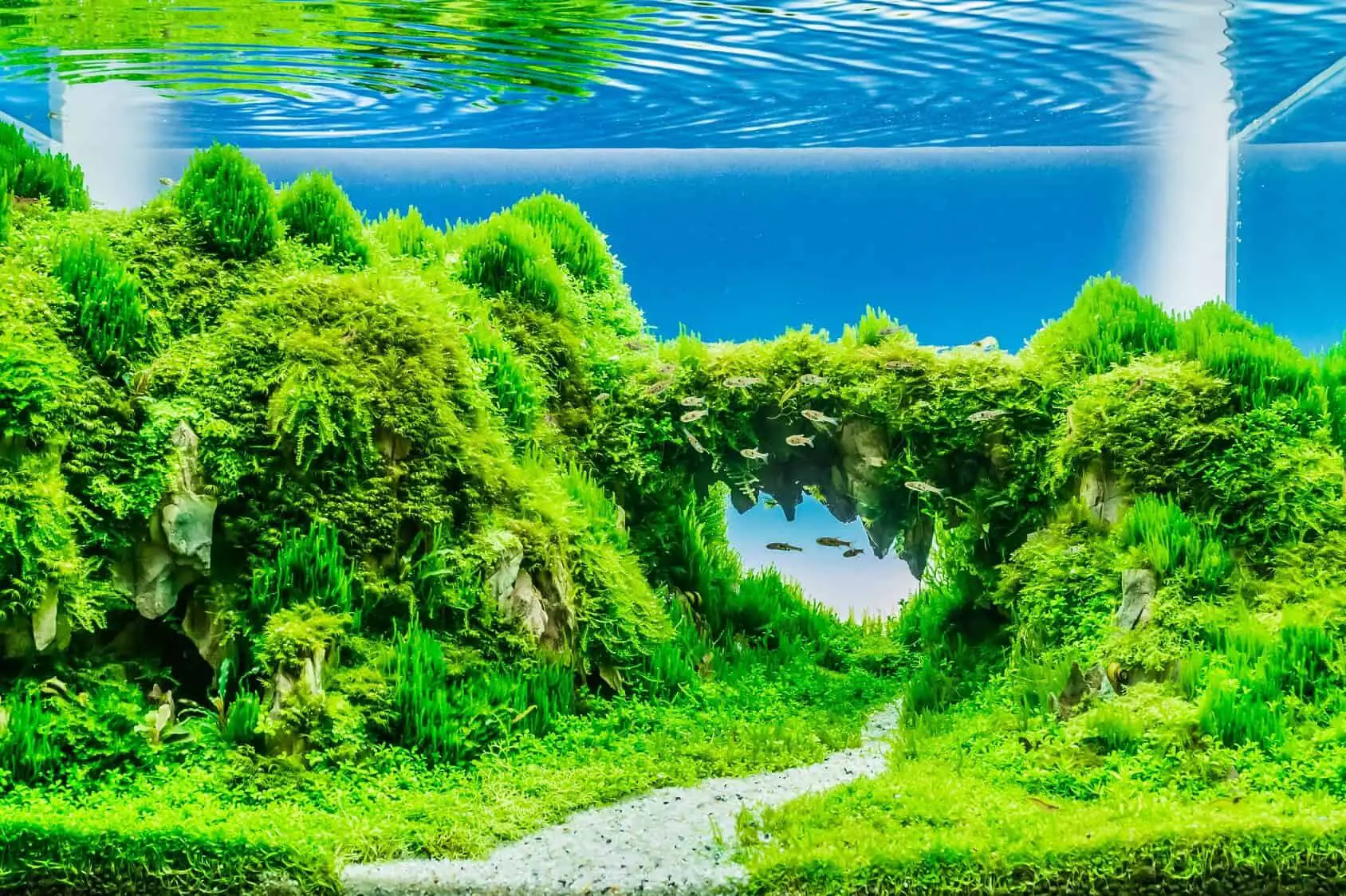
Now that you have all the necessary equipment and plants, it’s time to bring your aquarium to life by planting your chosen vegetation. Proper planting techniques ensure that your plants thrive and contribute to the overall visual appeal of the aquarium.
How to Properly Plant in the Aquarium
Begin by carefully removing the plants from their containers and gently separating any tangled roots. Make small holes in the substrate using your fingers or a tool, and place the plants into the holes, ensuring that the roots are covered.
Avoid overcrowding the tank, as this can hinder plant growth and create an imbalance in the ecosystem. Finish by gently filling the aquarium with water.
Arranging Plants for Aesthetic Appeal
The way you arrange your plants can greatly enhance the aesthetic appeal of your aquarium. Consider creating focal points or grouping plants of different heights and colors to add visual interest and depth. Remember that plants will grow and spread over time, so leave enough space between them to allow for growth.
With your planted aquarium now set up and thriving, it’s time to sit back, relax, and enjoy the serene beauty of your underwater oasis. Regular maintenance, such as water testing, pruning, and fertilizing, will help keep your plants and fish healthy.
Remember, each planted aquarium is unique, so don’t be afraid to experiment and personalize your setup to create a truly stunning display.

